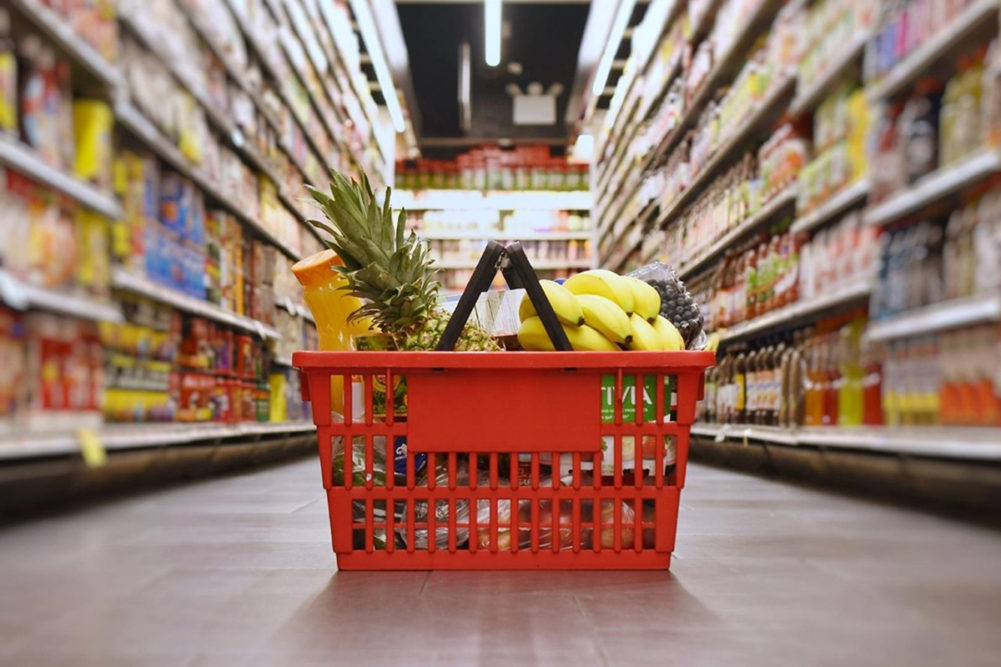According to FMI - The Food Industry Association, the average supermarket stocks more than 31,000 items. To operate efficiently, it’s important to track how many of these items are actually sold and how many are wasted.
Reports suggest that in the UK grocery retail sector, stores throw away the equivalent of 190 million meals a year. Globally, food waste is being recognized as a serious problem. Despite well-intentioned initiatives to combat it, however, about 1.3 billion tons of food is nevertheless wasted annually – enough to feed 815 million people, four times over.
Food waste is one of the grocery industry’s most pressing challenges. Consumers care more than ever before about preventing food waste and unsold inventory puts significant pressure on the bottom line in an increasingly competitive marketplace where margins are already squeezed.
Accurate inventory handling is key. For example, if retailers overstock merchandise – particularly perishable items – they face limited options when items don’t sell. As merchandise nears expiration, retailers must decide: do they mark down the item and reduce profit margins, and if so, by how much? Or do they toss the item, losing money and increasing waste? While strides are being made to reduce and divert surplus waste, if we are to meet the UN target of cutting global food waste in half by 2030, grocery stores need to do more to help get this done.
Advancements in technology may be the answer to reducing food waste in the retail sector. Artificial Intelligence (AI) and Machine Learning (ML) are arming retailers with actionable insights that enable them to better match supply with demand, make efficiency gains, effectively manage markdowns, and reduce overstocking.
A good example can be seen in the UK’s grocery tech giant Ocado. Through the innovative use of data analytics, Machine Learning and Artificial Intelligence, the retailer has slashed food wastage rates to just 1 in 6,000 It also uses advanced forecasting engines to predict demand to avoid over-ordering from suppliers. Meanwhile, ML is also helping optimize and manage real-time routing of delivery drivers, with 9.5 million routing calculations per second.
Retailers like Ocado recognize the importance of precise forecasts to help improve inventory handling and in turn, reduce waste. Unlike the data collected in the past – which often resulted in overwhelming amounts of data that was not only too cumbersome to manage but often the wrong data needed to make accurate predictions – today’s machine learning algorithms improve over time and help retailers understand the true picture of supply and demand at a local store level.
Transforming inventory handling with machine learning
Forecasting and stock optimization are among the key benefits afforded by ML. Here, smart algorithms determine the products customers want, allowing for accurate forecasting and planning.
This data can be used to increase efficiencies by ensuring no excess merchandise is ordered – or wasted. It also enables retailers to get a fully accurate picture of their inventory and where it is held, whether on the shop floor or in the stock room. By matching supply with demand, retailers can reduce overstocking and make informed decisions further out to accurately fulfil stock requirements. Additionally, it allows for an alignment between ordering and delivery cycles by understanding the reality of demand fluctuations.
Accurate inventory handling can also help reduce the need for costly markdowns. Unfortunately, these already form part of a tried and tested strategy in the grocery retail tool kit, where large amounts of perishable goods account for high levels of wastage. When markdowns are unavoidable, ML can offer the capabilities to identify the optimal price, helping to protect the product’s margin as it nears its expiration date. Instead of simply reducing products by percentage increments, the technology is helping retailers determine the best price based on several key factors and existing retail data points.
Moreover, accurate machine learning is also drastically reducing the risk retailers take with promotional offers. A more accurate outlook on the value of selected promotions requires business owners to take a more granular look at the effects of a promotion to control spending and increase profits. Machine learning is assisting in predicting the best promotions while ensuring their activation has an overall positive impact on the bottom line of the business. By predicting the likely outcome of a promotional offer, store managers can make informed decisions on both the promotion and product price.
ML models are also being used to study the behavior of individual shoppers by recommending promotions for buyers with similar purchasing patterns. This is an important incentive that today sees retailers offering customers the choice of promotional discounts, based on the most purchased items within a set timeframe.
Understanding trends and making accurate predictions
When grocery retailers opt to use ML to improve inventory handling – the benefits are two-fold. Product availability is improved, meaning customers find what they want and when they need it, and waste is reduced. This in turn protects margins and profits. The uptake is enabling retailers to create highly accurate forecasts previously unseen in the sector. While the retail industry may never entirely remove waste –an element of spoilage in fresh and perishable sectors is inevitable– it can dramatically reduce it.
As retailers embrace an intelligent future, powered by AI and ML, further advancements can be made. From embracing accurate sales forecasts to increasing the focus on customer service to the technology is here to help to build a retail revolution where high levels of waste are a thing of the past.
For more information on how Machine Learning can transform your inventory handling, visit the Impulse Logic website.
Matt Frost is CEO of Impulse Logic.

